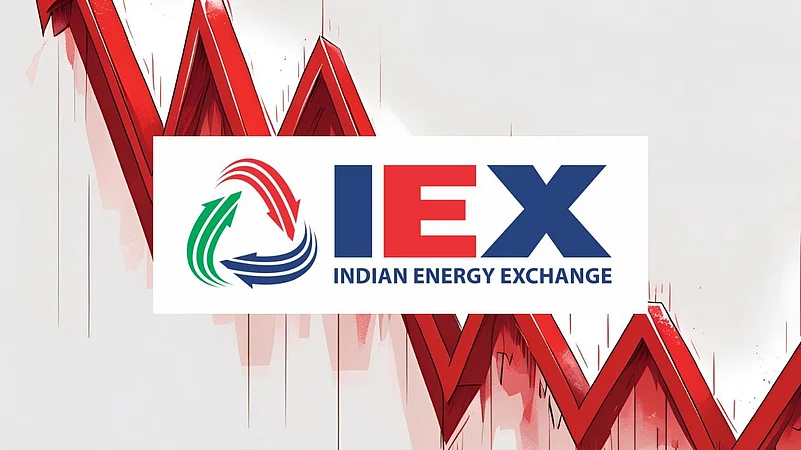Shares of the Indian Energy Exchange (IEX), a platform for trading energy contracts, crashed up to 10 per cent in trade on June 11 as market coupling fears returned. According to a CNBC-TV18 report, Power Minister Manohar Lal Khattar is likely to hold a meeting with key industry players to fast-track the implementation of market coupling in the power exchanges.
At close, IEX shares traded at Rs 193.68 per share on the National Stock Exchange (NSE), down by 7.78 per cent against previous close. During the session, the shares slipped to as low as Rs 188.59 apiece. So far in 2025, the stock has rallied 7.25 per cent, and over the past one year it has yielded 14.60 per cent return.
What Is Market Coupling
Market coupling is a process where all the buy and sell bids from different power exchanges are aggregated together and then matched to discover a single, uniform market clearing price. This means that instead of having multiple prices across exchanges, there will be just one price for electricity.
Further, by combining the buy and sell bids from various exchanges, market coupling ensures that electricity is transmitted efficiently across the country.
As per the power market regulator Central Electricity Regulatory Commission (CERC), market coupling also aims to maximize the economic surplus for both buyers and sellers. By considering all types of bids, it ensures that the markets operate in a way that benefits everyone.
Why The Need For Market Coupling
India has three power exchanges: IEX, Power Exchange India Limited (PXIL), and Hindustan Power Exchange Limited (HPX). These exchanges operate independently and each of them collects buy and sell bids on their own. As a result, these exchanges end up having their own market clearing prices, which typically are different from each others’.
In other words, each power exchange has their own price quotations of electricity. Though these prices differ by only a few paise, the existence of different prices across exchanges often led traders to prefer buying from the exchange offering lower prices and selling to the one offering higher prices.
Impact Of Market Coupling On IEX
The market share in the power trading space is very skewed. IEX enjoys a dominant share, while the other two hold a minuscule share of the whole market. If market coupling is implemented, this could lead to a more balanced market where electricity prices are more uniform across exchanges.
This is expected to increase competition between the three power exchanges, which might lower trading volumes on IEX, hampering its monopoly. Lower trading volumes mean lower revenue for IEX.









